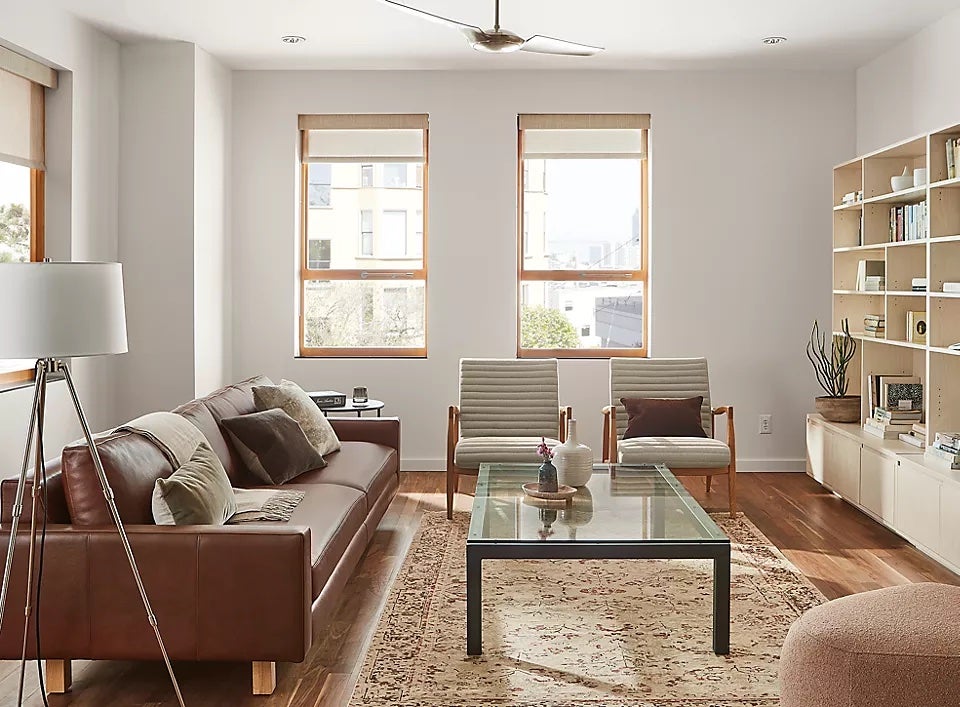When John Gabbert set out to open a furniture store in 1980, he said if it was going to be successful, it had to be different. As the company enters its fifth decade, Room & Board has certainly proven that to be very true.
As one of the largest home furnishings retailers in the country—and probably one of the lowest-profile ones, too—Room & Board is the exception to just about every rule in the industry book. It’s a national chain, but with its 20th location opening later this year, it is hardly a household name. Though significantly smaller than some of the retailers it is often compared to, like RH or Pottery Barn, Room & Board also has a full assortment of home goods, from furniture to decorative accessories and home textiles—but 90 percent of what it sells is made domestically, a far cry from the import-dominated mixes of comparable competitors.
For years, the brand has been talking about things like sustainability, customer service, working conditions and direct-to-consumer sales—long before they became buzzwords in the business. And while the entire furniture and furnishings sector has been having an outstanding year as consumers focus on improving their homes, it’s fair to say that few have had the boom Room & Board has experienced, with business up 35 percent last year to $500 million and projections for 2021 to top out at $675 million.
“We believe we are the leaders in modern home furnishings,” said president and chief operating officer Bruce Champeau (a company lifer, like many of his colleagues) in an interview with Business of Home earlier this month. “Of course we’re aware of others, but we’re competing against ourselves. Everyone looks for what is their niche, and for us, it’s never been growth for the sake of growth.”
That may be an understatement given the measured approach the company has taken since Gabbert—who by his mid-20s was the president of Gabberts, the Minneapolis furniture dealer founded by his father—set out to create his own independently owned and operated home retailer. Today, Room & Board only operates in 10 states and Washington, D.C., with most of its locations in the 35,000- to 50,000-square-foot range, either free-standing or located in “lifestyle” outdoor centers. (The one exception is a new 5,000-square-foot Design Studio that opened last year in Pasadena, California.) Another state will be added to the roster when the newest store opens in Bethesda, Maryland, this fall.
Whatever the size, the stores conform to a very consistent model: contemporary furniture for living rooms, bedrooms, dining rooms and outdoor, as well as decor and accessories, usually sourced from small American manufacturers. Store employees are salaried, not commissioned, with a minimum starting wage of $40,000.
Starting with its catalog years ago, Room & Board has always made direct-to-consumer a key part of its business. Today that’s reflected in its e-commerce sales, which were 48 percent of total revenue pre-pandemic and are expected to top off at about 58 percent this year. But Champeau says the lines between sales made in-store versus online are getting “blurred” and ultimately, “the power needs to go back to the consumer.”
While the subject of sustainability has become popular these days, Room & Board was well ahead of the trend. “We always asked what is the solution, and to us, sustainability is part of that,” he said. “Today, the consumer wants to understand how the product is made, what it’s constructed of and if it’s safe. It’s about how you want to live, and it’s why we’re about creating heirloom products that will last a lifetime.” Champeau adds that the beds he bought for his kids so many years ago are now being used by his grandkids.
He is particularly proud of the company’s association with the Urban Wood Project, which takes reclaimed wood and lumber from felled inner-city trees and uses it to make furniture. A parsons table available at the store uses 90 percent recycled materials.
The reliance on domestic resources also gives the company better control over its supply chain, shorter lead times and more custom capabilities—all things that have contributed to its becoming more efficient and eco-aware.
The amazing surge the entire industry has seen over the past year has been especially felt in categories like outdoor and home office, Champeau says, but adds: “As people have been spending more time at home, it’s really been across the board.” He also points to Room & Board’s Business Interiors group, which serves the hospitality and office sector, as one that will return in a big way “as businesses start to reinvent how they use their spaces.”
It’s just another reason why Champeau says his company feels so optimistic about the year ahead. “We are starting to see store traffic levels come back to pre-COVID levels, and as people see their homes as a place of safety, they will continue to invest in them,” he says. “We firmly believe these are lasting changes.”
Homepage photo: Room & Board’s Pierson leather sofa and Callan chairs, from the brand’s 40th anniversary digital catalog | Room & Board
____________
Warren Shoulberg is the former editor in chief for several leading B2B publications. He has been a guest lecturer at the Columbia University Graduate School of Business; received honors from the International Furnishings and Design Association and the Fashion Institute of Technology; and been cited by The Wall Street Journal, The New York Times, The Washington Post, CNN and other media as a leading industry expert. His Retail Watch columns offer deep industry insights on major markets and product categories.





























